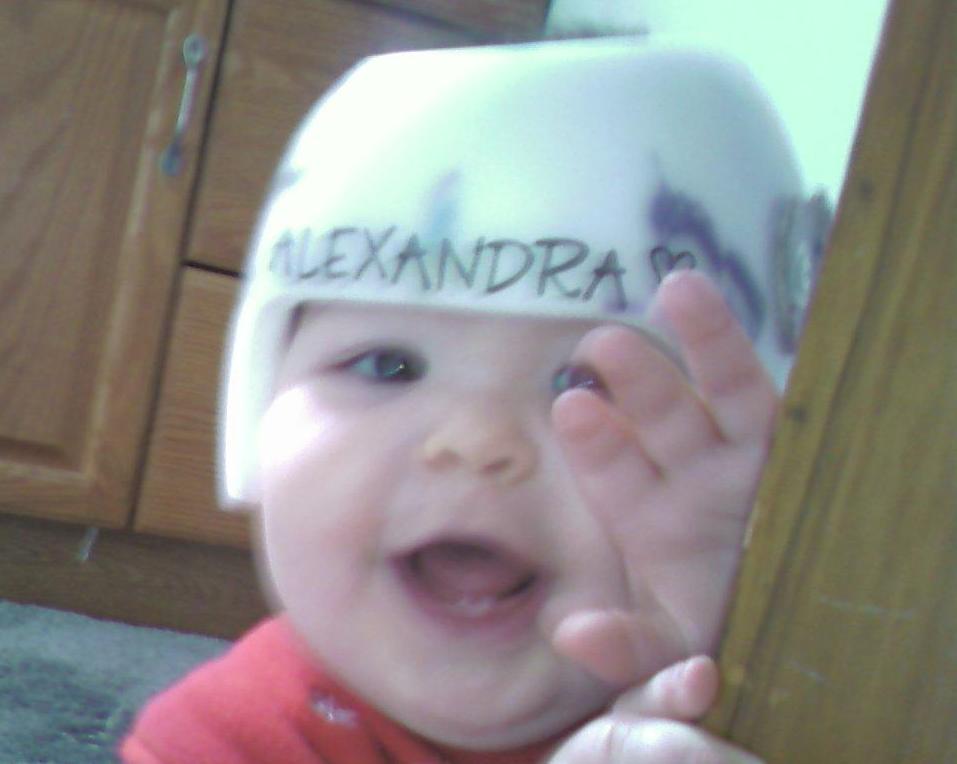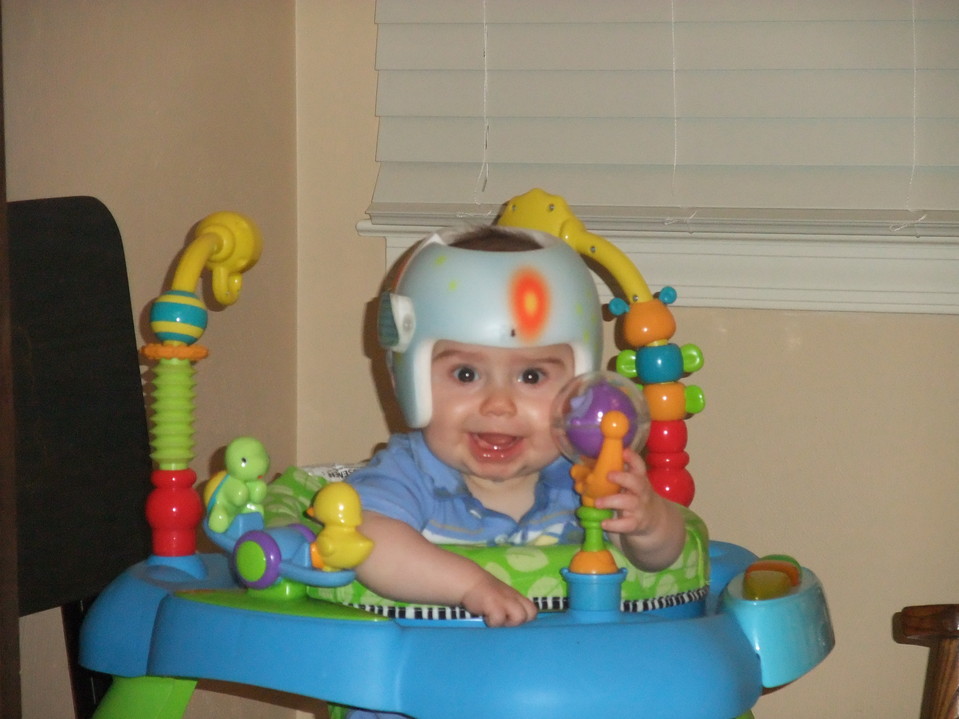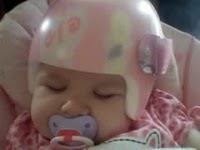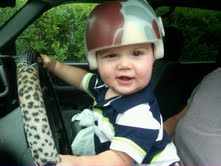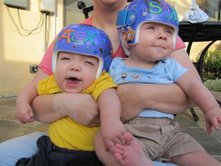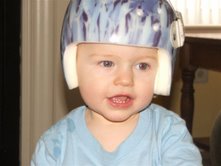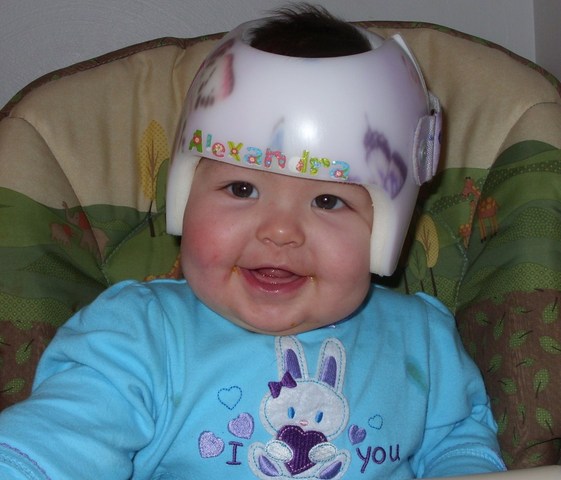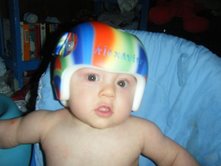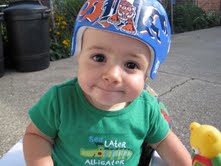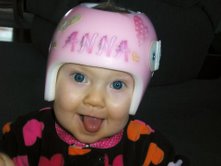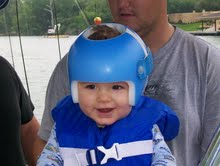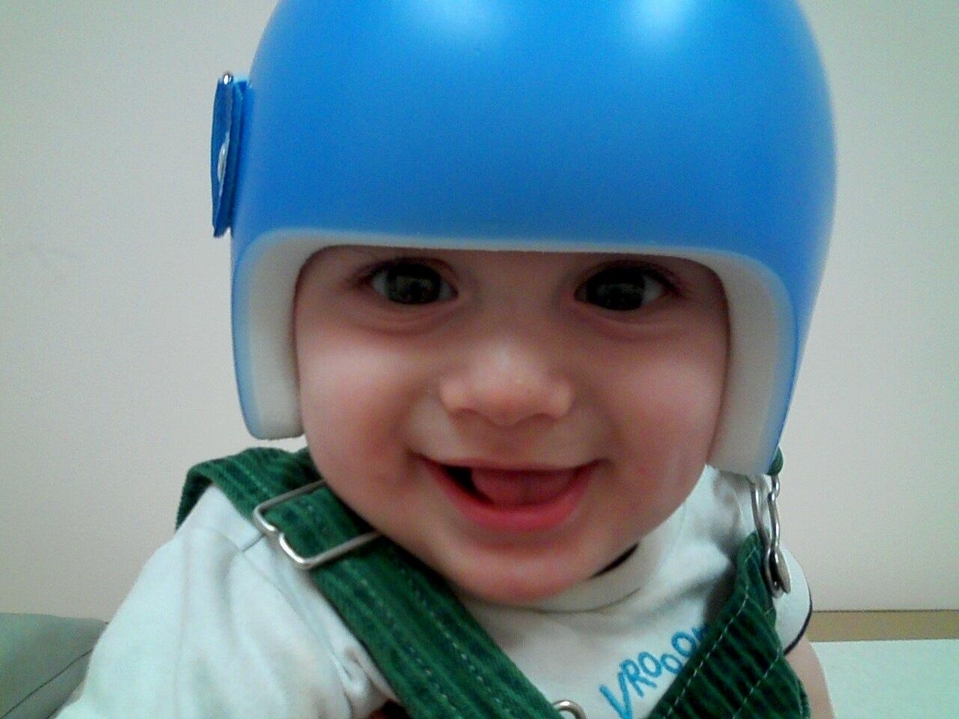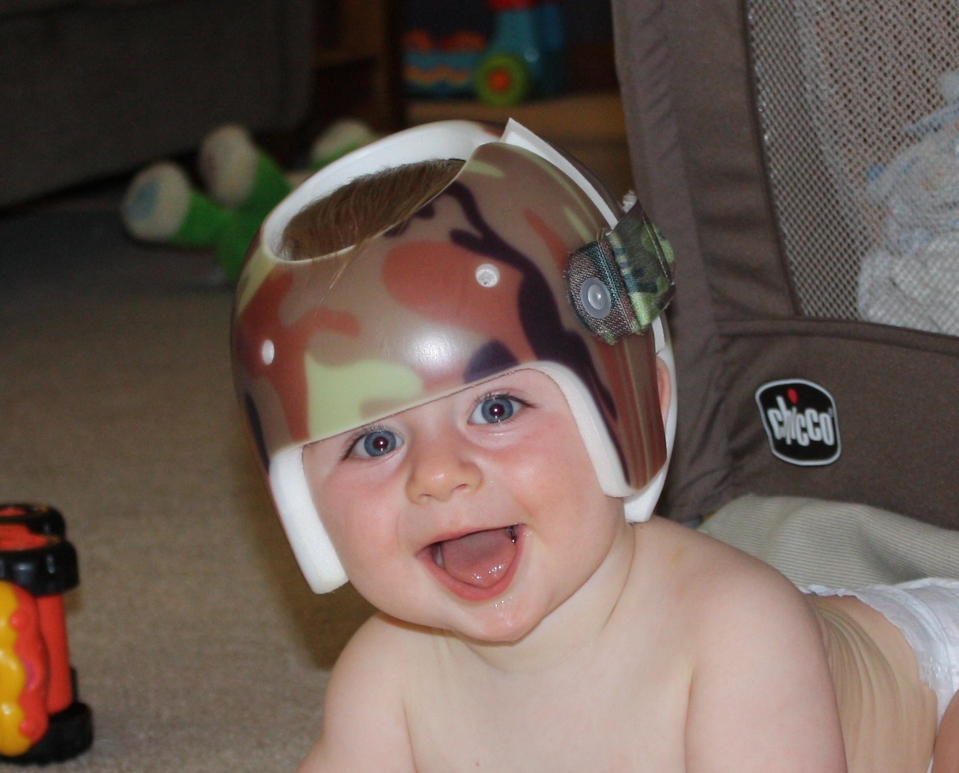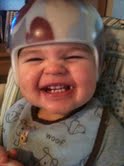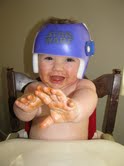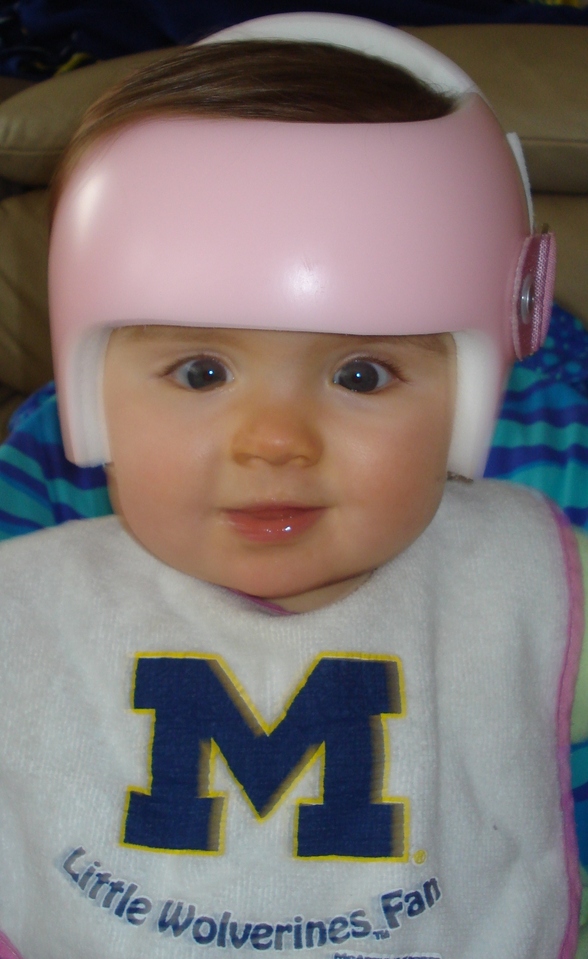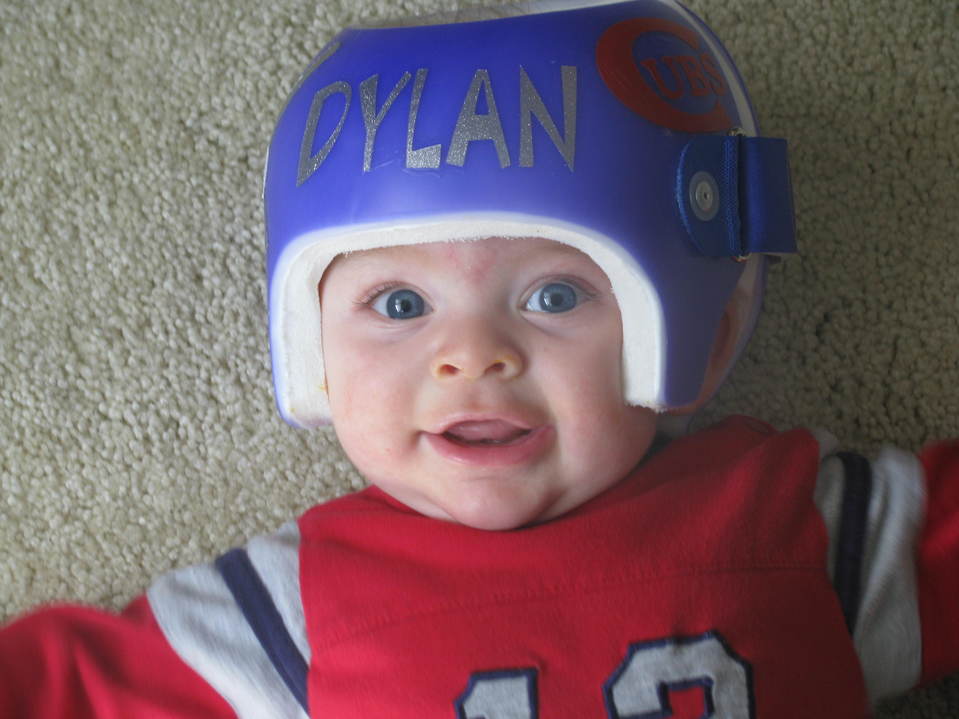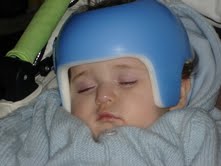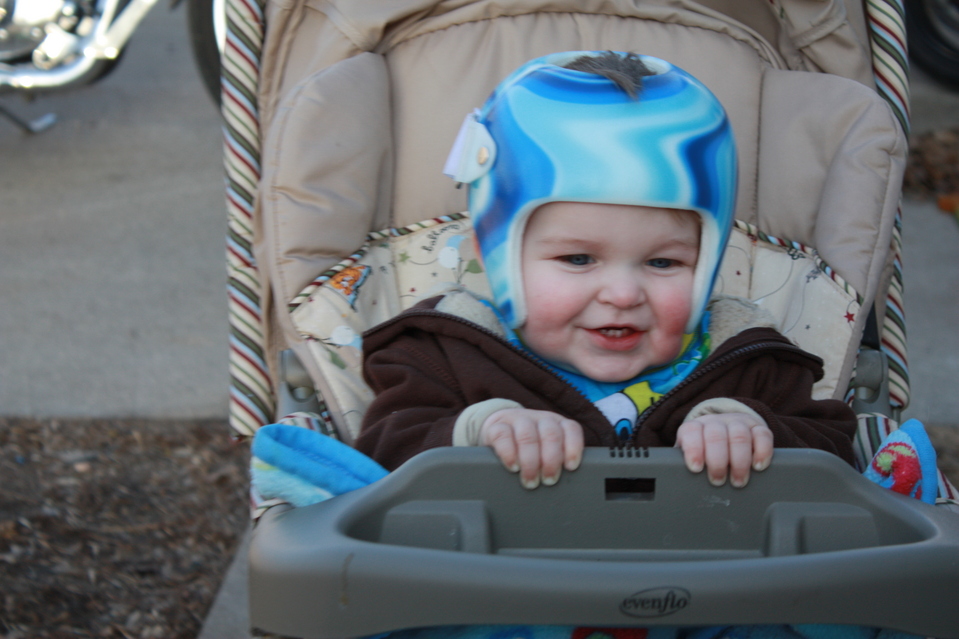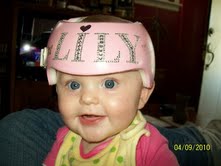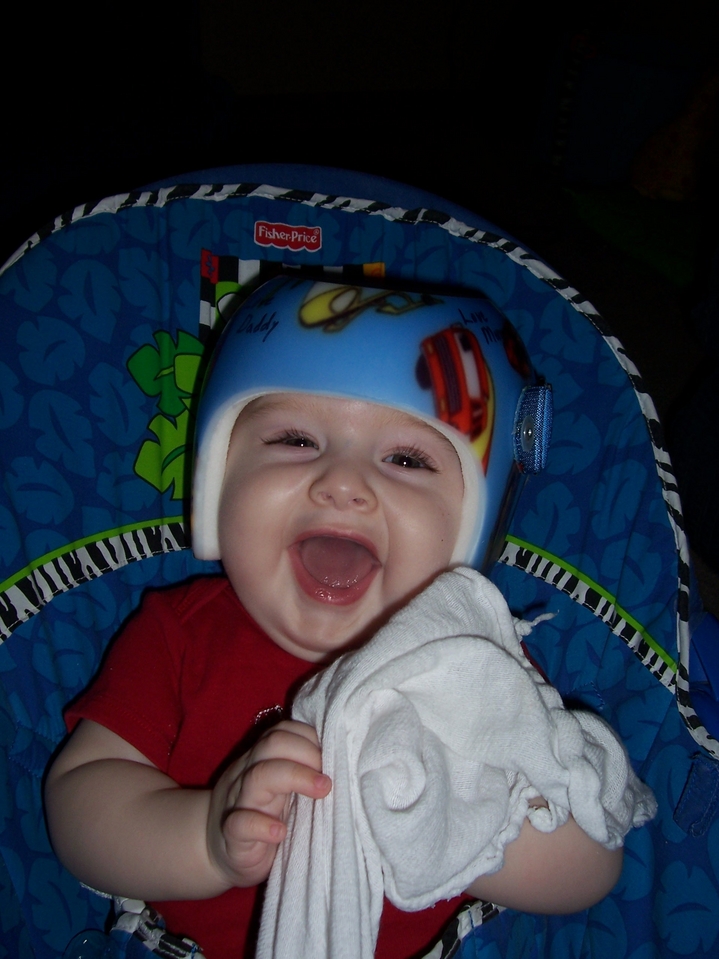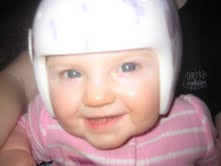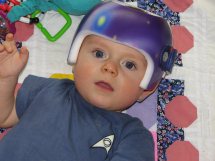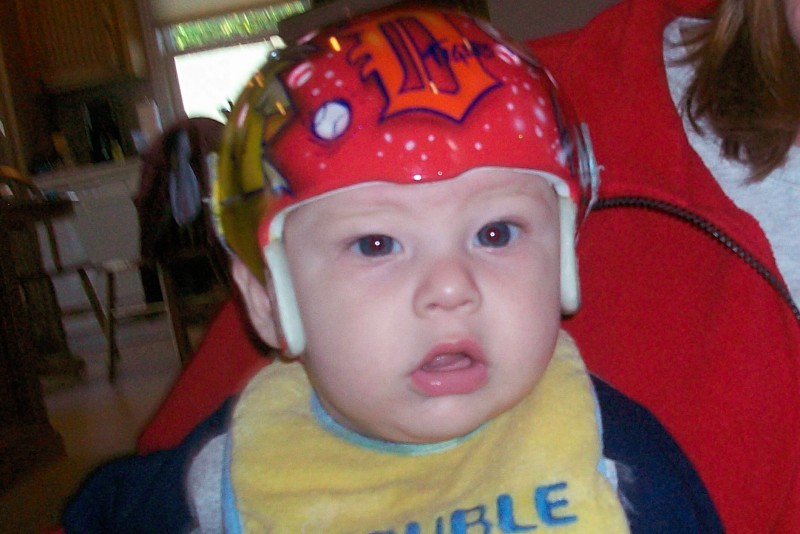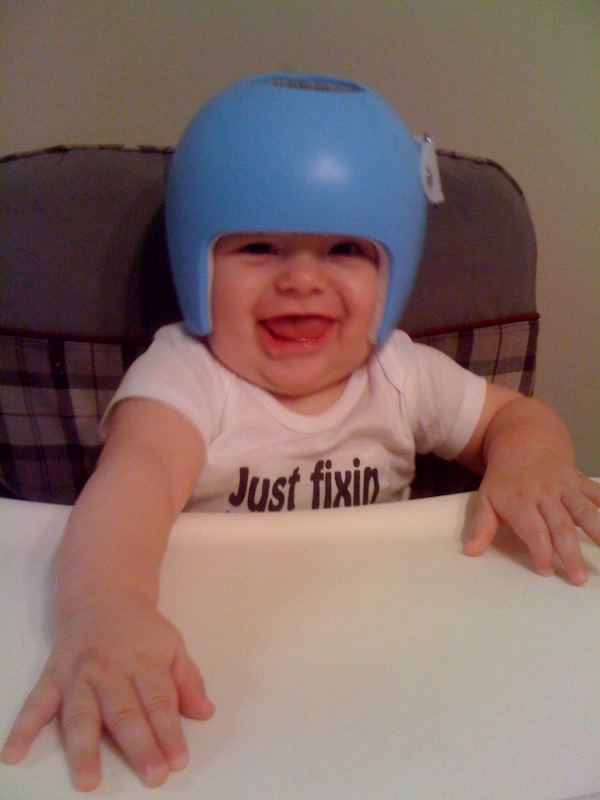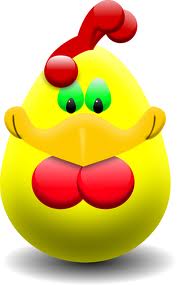©2009-11 Alexandra's PHATE
Alexandra's P.H.A.T.E. © 2011 Alexandras P.H.A.T.E. All rights reserved. Reproduction of material from any pages without written permission is strictly prohibited.
Contact Us: 412.860.4557 | email
Content on this website is provided for informational purposes only and is not intended as a substitute for medical consultation. Please direct all inquires to your medical practitioner.
All StarBandKids and Orthomerica Images and information are Courtesy of Orthomerica Products, Inc. ©2011
Content on this website is provided for informational purposes only and is not intended as a substitute for medical consultation. Please direct all inquires to your medical practitioner.
All StarBandKids and Orthomerica Images and information are Courtesy of Orthomerica Products, Inc. ©2011
Logo artwork courtesy of Barry Linck. Visit his site at Phinmagic.com
Helmets and Cranial Remolding Orthosis
Do you have questions about Cranial Remolding Orthosis? What are they? How do they work? Can they correct plagiocephaly?
We have the answers to many of your Cranial Remolding Orthosis questions, right here! If you happen to not find what you are looking for, please fill free to visit our "contact" page, and we will be happy to help any way that we can.
Follow Us!
What is Deformational Plagiocephaly?
Deformational plagiocephaly is characterized by unusual flattening of an infant's head and often a prominent or flattened forehead is visible. Plagiocephaly exhibits a variety of different head shapes, including flattening on one side of the back of the head with an asymmetric forehead, and brachycephalic head shapes that are flat across the entire back of the head with very prominent forehead.
Is Deformational Plagiocephaly more common than in the past?
The incidence of deformational plagiocephaly has increased since 1992 when the American Academy of Pediatrics recommended that parents place infants on their backs or sides to sleep in order to prevent Sudden Infant Death Syndrome. This highly effective program has dropped the SIDS rate in the United States and across the world by 40%. However, the additional time many infants spend in infant seats, car seats, and other supine (back) positions places them at risk to develop greater flatness and/or asymmetrically shaped heads. But this program alone is not responsible for the increased incidence. Other factors that may influence the development of deformational plagiocephaly include: premature births, restrictive intrauterine positioning, cervical spinal abnormalities and/or birth trauma. Deformational plagiocephaly is commonly seen in multiple births, affecting one or more siblings.
As many as 85% of the infants with deformational plagiocephaly also have torticollis. This condition is caused by tightness or weakness on one side of the sternocleidomastoid muscle in the neck. When one side of this muscle is shortened, the infant's head bends forward, tilts toward the shoulder on the affected side, and the face rotates toward the opposite shoulder. This muscle tightness or imbalance causes the head to rest consistently in the same position, creating areas of flatness on the back of the skull and compensatory growth in order areas of the head. Physical therapy is often prescribed to address torticollis. Home programs for stretching and massage of the affected muscle are very successful at addressing this problem.
As many as 85% of the infants with deformational plagiocephaly also have torticollis. This condition is caused by tightness or weakness on one side of the sternocleidomastoid muscle in the neck. When one side of this muscle is shortened, the infant's head bends forward, tilts toward the shoulder on the affected side, and the face rotates toward the opposite shoulder. This muscle tightness or imbalance causes the head to rest consistently in the same position, creating areas of flatness on the back of the skull and compensatory growth in order areas of the head. Physical therapy is often prescribed to address torticollis. Home programs for stretching and massage of the affected muscle are very successful at addressing this problem.
What is the ideal age for cranial remolding treatment?
How Do I know if my infant needs a cranial remolding orthosis?



How Do Cranial Remolding Orthoses work?
What if my peditrician says my infants headshape will fix itself?
There are certain signs that may indicate that your infant needs a cranial remolding orthosis. However, please keep in mind that some degree of asymmetry in the skull is normal for everyone, so it is actually the magnitude of the asymmetry that indicates whether treatment with a cranial remolding orthosis is warranted. If you recognize that your infant's face is not symmetrical, their head is higher or wider than normal, or that there is flatness on the back side of their head, you may want to visit your physician for further assessment.
The cranial remolding orthosis treatment program focuses on redirecting cranial growth toward greater symmetry. This is accomplished by maintaining contact over the prominent areas of the head, and allowing room for growth in the areas of flattening. This treatment has been used by medical professionals since 1979 when Sterling Clarren, MD wrote the first article about the use of cranial remolding orthoses for infants with deformational plagiocephaly and torticollis.
The best age for treatment is between 4 and 7 months when the skull is growing at the fastest rate. However, cranial remolding orthoses can be used successfully between 3 and 18 months of age. Caregivers should try to reposition for at least two months prior to initiating treatment with a cranial remolding orthosis unless the infant is older than 7 months. At this point, infants are able to reposition themselves, and caregiver efforts to reposition are often futile.
Why is treatment more effective between 4 and 7 months?
Historically, many head shape deformities present at birth disappeared within about 6 weeks because babies were placed in a number of different positions during the day and slept on their tummies at night. Since the Back to Sleep program was initiated in 1992, these head shape deformities often persist because babies sleep on their back all night and spend extended time on their backs during the day in infant carriers, swings, car seats, etc. Parents must be vigilant about changing the infant's position more than in any other period of child rearing. Babies that spend most of their time on their backs in the early months roll and crawl later than usual, which results in even more time before the infant is able to actively reposition themselves. The best way to help your infant's head correct "on its own" is to place your infant in a variety of positions during the time your infant is awake and supervised. This will encourage your infant to actively move their head through a full range of motion, strengthen their neck, shoulder and trunk muscles, and minimize pressure on the back of the head. More suggested repositioning activities are available in "Tummy Time Tools", a document that can be downloaded from Orthomerica's website. It is possible that your efforts to reposition your infant will be rewarded with a more symmetrical head shape that does not require further intervention. However, if your infant's head does not change after two months of alternate positioning, make sure your pediatrician understands that you have tried prone and other positions to help make the infant's head more symmetrical, and the skull has not corrected. Then ask your pediatrician if your infant would benefit from a cranial remolding orthosis, and/or request a referral to a craniofacial specialist.
Why does Orthomerica manufacture so many different helmets?
Even though the head grows fastest during the first 3 months of life, this time period is best spent actively repositioning your infant to encourage more symmetry. Between 4 and 7 months of age, the head grows about 1 cm per month*, and this rapid growth can be harnessed within the orthosis to produce rapid change in the desired direction of growth. At this point, the infant is starting to develop more head control and can tolerate the additional 6-8 ounces of weight from the helmet. It is actually the infant's own growth that is the most active part of any orthotic treatment program. The orthosis is specially designed to make total contact in the areas of the skull where growth needs to be curbed, and allow space in the areas where growth is desirable. Between 8-12 months, the skull still grows quickly, but the rate is reduced to 0.5 cm per month*. Between 13-18 months, the rate drops below 0.5 cm per month*, and the skull begins to get thicker. Change is still possible in these older babies, but change is slower and generally requires longer treatment programs.
Are there different kinds of Cranial Remolding Orthoses?
Yes, there are different styles of cranial remolding orthoses. You may see pictures of various designs that are made with different kinds of plastic materials, with or without soft liners, with or without straps, with different colors or patterns, and with or without ventilation holes. Essentially, all cranial remolding orthoses work in a similar manner by directing growth of the infant's head into a more symmetrical or proportionate shape. Currently, Orthomerica offers the widest variety of designs, including the STARband, STARlight (band, cap, and bivalve), and Clarren Helmet.
Is one style of cranial remolding orthosis better than another?
The variety of designs and materials available from Orthomerica allows the practitioner to choose a design that will achieve the best results for the patient's unique skull shape and circumstances.
Orthomerica's cranial designs include:
STARband: This design is appropriate for all head shapes except scaphocephaly, which is a long, narrow head shape. The STARband is made of a plastic shell with 1/2" foam liner. A mold of the infant's head is modified at Orthomerica to produce a more symmetrical head shape. The practitioner sees the infant every two weeks (or more often during periods of rapid growth) and may shave additional material out of the STARband to allow space in the areas of flatness. The side and top openings make this a lightweight and easy to apply orthosis for caretakers, and is the most popular cranial design at Orthomerica because it is appropriate for so many different head shapes. The STARband is an active design.
STARlight Bivalved: This design was originally created to treat infants with scaphocephaly, a long and narrow head shape. The mold is usually modified to allow more space along the sides of the infant's head where growth is desired, but it can also be modified in a variety of ways to manage other head shapes. It is made from clear plastic with a front and back shell held in place at the top, and has a Velcro( strap that fastens at the back of the orthosis. The clear plastic allows visualization of the areas of total contact and space, and can be altered with a heat gun to accommodate growth in specific areas. The STARlight Bivalved Orthosis is an active design.
STARlight Band: This orthosis is made of clear plastic, and has side and top openings similar to the STARband. It is an extremely lightweight band, and is beneficial for very young babies, or for a infant who may need another orthosis for a short period of time until the infant is rolling or sitting up independently. The band can be heat-molded to accommodate growth and is an active design.
STARlight Cap: This orthosis is clear plastic and has no top or side openings. This is an effective orthosis for a variety of head shape and allows visualization of the areas of total contact and flatness. The band can be heat-molded to accommodate growth, and is an active design.
Clarren Helmet: This design was originated by Sterling Clarren MD of Seattle Children's Hospital in 1979 to treat infants with deformational plagiocephaly. It is made from a plastic shell with a thin liner incorporated for comfort. All the modifications are built in to the helmet from the start, so follow up appointments are less frequent than with other types of remolding orthoses. This is the only Orthomerica design with a chin strap which helps to suspend the orthosis on the infant's head. The Clarren Helmet is considered to be a passive design.
Currently there are no studies that compare one product to another. The FDA actively regulates the manufacturing process of all cranial remolding orthoses styles, and each design offered by Orthomerica has received FDA clearance. The specific cranial design is selected based on the infant's head shape and the treatment preferences of the orthotist and the referring physician.
What kind of health care professional will be treating my child?
There are many reasons why Orthomerica products are preferred.
1. Orthomerica has an experienced cranial support team who work to provide the best cranial remolding orthoses available on the market.
2. Orthomerica is an FDA Registered Medical Device Manufacturer, fully compliant with the U.S. FDA Quality System Regulation (QSR) and its Current Good Manufacturing Practices (CGMP). Currently, Orthomerica has four 510K's under which the FDA permits Orthomerica to produce multiple designs of Cranial Remolding Orthoses. This represents twice the number of 510K's held by any other manufacturer in the world! Additionally, Orthomerica is certified to ISO-9001, the International Standard for Quality Systems, and markets its products around the globe.
3. Orthomerica has two Clinical Education Managers on staff who are published and nationally recognized speakers in the orthotic management of infants with deformational plagiocephaly and other head shape problems. They have lectured and provided courses worldwide to pediatric neurosurgeons and plastic surgeons, as well as, to pediatricians, therapists, nurses, and other health care providers. They have written brochures about the prevention of deformational plagiocephaly, and have collaborated with other health care professionals to study the effectiveness of repositioning, physical and occupational therapy and its impact on orthotic intervention.
4. Orthomerica's on-site certified orthotist provides ongoing consultation and information to orthotists, and specially trained customer service specialists track every cranial order to ensure the proper fabrication and specifications of the orthosis. Each step of the fabrication process has quality control checks and balances in place to ensure the quality of the orthosis.
5. Orthomerica has worked with physicians and orthotists throughout the United States to develop and offer a variety of cranial remolding orthosis designs that would best address the needs of babies with very complex head shapes.
6. Orthomerica has teamed up with leading hospitals and physicians, such as Children's Hospital of Atlanta and Sterling Clarren, MD, of Seattle Children's Hospital, to conduct research concerning cranial remolding orthoses and the treatment of plagiocephaly. Dr. Clarren was the originator of modern cranial remolding orthoses, and in 1979, was the first to publish an article on the topic. This past year, Orthomerica was selected to exclusively fabricate all Clarren Helmets worldwide.
7. Orthomerica is the first cranial remolding orthosis manufacturer to incorporate scanning technology with the treatment of infants with deformational plagiocephaly. For over three years, centers across the United States have used Orthomerica's STARscanner --- a laser data acquisition system that replaces the casting process traditionally required for obtaining a mold of the infant's head. Thousands of infants have benefited from this technology, which is safe, accurate, and fast --- taking less than 2 seconds. The STARscanner is also an excellent tool for collecting data to measure the progress of patient treatment, for insurance documentation, and for clinical research studies.
To locate a STARscanner facility in your area, click here.

Your pediatrician or craniofacial specialist will prescribe a cranial remolding orthosis for your infant. You will then be referred to a credentialed orthotist or prosthetist who will provide the cranial orthosis and the ongoing treatment program. These allied health care professionals are specifically trained and educated to provide and manage the provision of custom orthoses (braces) and prostheses (artificial limbs).
Credentialed orthotists and prosthetists have provided cranial remolding orthoses for more than 25 years. These health care practitioners maintain high standards of continuing education through national certifying bodies and many have specialized pediatric orthotic practices. As key medical team members, these practitioners bring value to the orthotic treatment program with a strong background in anatomy, biomechanics, material science and patient care. These practitioners also work closely with other members of the health care team to provide quality orthotic management to ensure that your infant has optimal results.
Credentialed orthotists and prosthetists have provided cranial remolding orthoses for more than 25 years. These health care practitioners maintain high standards of continuing education through national certifying bodies and many have specialized pediatric orthotic practices. As key medical team members, these practitioners bring value to the orthotic treatment program with a strong background in anatomy, biomechanics, material science and patient care. These practitioners also work closely with other members of the health care team to provide quality orthotic management to ensure that your infant has optimal results.
How do I get an Orthomerica Cranial Remolding Orthosis for my child?
First, you will need to get a prescription from a physician for a cranial remolding orthosis. Referrals as to where to go and who to see will depend upon your physician, insurance company and the caregiver. In some cases, your physician may refer you to a specific facility or practitioner for treatment because he/she has a working relationship with this allied health care professional. If you have insurance, your insurance company may require you to go to a network provider to minimize your out-of-pocket expenses.
Use this link for a directory of facilities accredited by the American Board for Certification (ABC). These facilities can be contacted to determine if they are an experienced provider of Orthomerica's Cranial Remolding Orthoses. You may also contact Orthomerica Customer service at custserv@orthomerica.com. Please include your city and state in the email message, and a customer service representative at Orthomerica will respond with a list of orthotists in your area who currently provide Orthomerica's cranial remolding orthoses. It is in your best interest to thoroughly interview the practitioner(s) and make sure that you feel comfortable in your communications with the facility and the practitioner. We highly recommend that you ask prospective orthotists specific questions. Click here for a list of sample questions.
Use this link for a directory of facilities accredited by the American Board for Certification (ABC). These facilities can be contacted to determine if they are an experienced provider of Orthomerica's Cranial Remolding Orthoses. You may also contact Orthomerica Customer service at custserv@orthomerica.com. Please include your city and state in the email message, and a customer service representative at Orthomerica will respond with a list of orthotists in your area who currently provide Orthomerica's cranial remolding orthoses. It is in your best interest to thoroughly interview the practitioner(s) and make sure that you feel comfortable in your communications with the facility and the practitioner. We highly recommend that you ask prospective orthotists specific questions. Click here for a list of sample questions.
What is the history of Cranial Remolding Orthoses?
Orthotists and prosthetists have treated children with deformational plagiocephaly since the 1970s. The first article written about the use of cranial remolding orthoses to treat deformational plagiocephaly was written by Drs. Clarren, Smith, and Hanson in 1979 in a study done at the University of Washington. In 1998 the FDA ruled that cranial remolding orthoses fell into the category of Class II medical devices and required strict control standards. In order to continue providing these orthoses, centers had to apply for and receive FDA 510(k) clearance, which is an expensive and labor intensive process. Many orthotists and prosthetists stopped providing cranial remolding orthoses at that time because their design had not gone through the process of being cleared by the FDA. In July 2000, Orthomerica received 510(k) clearance to manufacture and market the STARband.
Orthomerica's intent is to make cranial remolding treatment more accessible, so parents do not have to travel long distances at great expense for these services. Orthomerica makes this possible by providing cranial remolding orthoses that credentialed orthotists and prosthetists can use to treat infants in their local communities. The STARband, STARlight and Clarren designs offer new options in the management of deformational plagiocephaly and brachycephaly, and have been welcomed by physicians, insurance companies, and parents as affordable and effective orthotic designs.
Orthomerica's intent is to make cranial remolding treatment more accessible, so parents do not have to travel long distances at great expense for these services. Orthomerica makes this possible by providing cranial remolding orthoses that credentialed orthotists and prosthetists can use to treat infants in their local communities. The STARband, STARlight and Clarren designs offer new options in the management of deformational plagiocephaly and brachycephaly, and have been welcomed by physicians, insurance companies, and parents as affordable and effective orthotic designs.
What is the difference between a casting and scanning procedure?
Each cranial remolding orthosis is a custom product, meaning that each orthosis is specifically made to fit each infant. In order to create such an intimately fitting and effective orthosis, a 3-D model of the patient's head is needed. Currently, there are two means of obtaining this 3-D model — 1) a cast impression of the infant's head, or 2) a scan.
The casting process involves laying a series of plaster splints over the infant's head and molding them as they dry. The cast is removed, producing a negative impression of the infant's head. The entire process takes between 15 and 30 minutes. The negative impression is then filled with liquid plaster to produce a positive, 3-D model of the infant's head.
The STARscanner is safe, accurate up to a half millimeter, eliminates the need for casting, and obtains data for a 3-D model of the infant's head in less than two seconds. This type of scan also allows an infinite number of measurements to be taken of the head, and then compared throughout the treatment program. Currently, there are more than 12 orthotic and prosthetic facilities and hospitals across the country that have the STARscanner non-contact laser data acquisition system. To locate a STARscanner facility in your area, click here.
The casting process involves laying a series of plaster splints over the infant's head and molding them as they dry. The cast is removed, producing a negative impression of the infant's head. The entire process takes between 15 and 30 minutes. The negative impression is then filled with liquid plaster to produce a positive, 3-D model of the infant's head.
The STARscanner is safe, accurate up to a half millimeter, eliminates the need for casting, and obtains data for a 3-D model of the infant's head in less than two seconds. This type of scan also allows an infinite number of measurements to be taken of the head, and then compared throughout the treatment program. Currently, there are more than 12 orthotic and prosthetic facilities and hospitals across the country that have the STARscanner non-contact laser data acquisition system. To locate a STARscanner facility in your area, click here.
Once a cast or scan is sent to Orthomerica, how long will it take to get my child's cranial remolding orthosis?
Once Orthomerica receives the cast impression or scan, the STARband will be shipped to the orthotist within 5 working days. Ideally, your child will be fit with an Orthomerica cranial remolding orthosis within 14 days of the casting/scanning date to assure proper fit and function. Since most insurance companies require approval prior to initiating orthotic treatment, it is important for the family and/or the orthotic facility to obtain this prior approval before casting/scanning the infant. Delays related to insurance coverage can be lengthy and frustrating because success in treatment is time sensitive and can have an impact on treatment results.
What kind of adjustments can we expect throughout the course of the treatment program?
Cranial remolding orthoses are designed to make contact over the "high" spots, and leave voids over the "low" spots. This provides "directed growth" of the head. Throughout the course of the treatment program, material (liners) may be removed to allow more growth in targeted areas. Pads may also be added in specific areas to further enhance the symmetrical or proportional growth of the infant's head. In addition, the plastic material may be heated and recontoured as the shape of the head changes. After each adjustment, it will be important to closely monitor your infant's head to make sure that it's adapting well to the adjustments.
How do I clean Orthomerica Cranial Remolding Orthoses?
The cranial orthoses manufactured by Orthomerica can all be cleaned with 78-99% rubbing alcohol. Wet a soft cloth with the alcohol and vigorously wipe out the entire inside of the orthosis once a day when you remove the orthosis for your baby's bath. This will help prevent bacteria from building up on the inner liner and will reduce the odor that is sometimes present. Make sure the alcohol is completely dry before placing the orthosis back on the baby's head. If you live in a sunny climate, place the band in the sun after cleaning it to help it dry. The baby's head should be washed daily with a mild baby shampoo that will not hurt the eyes. Aveeno shampoo, or Tea tree oil shampoo made by a company called Jason can soothe some scalp irritations that can occassionally occur because of heat buildup and perspiration inside the orthosis.
How should Orthomerica orthoses fit on my baby's head?
During the first two weeks of orthotic treatment, the cranial orthosis may shift around on your baby's head, especially if your baby has a head shape that is asymmetrical. While this may require the caregivers to frequently reposition the band, rotation is not unusual during this early treatment time as the asymmetrical head adjusts to the more symmetrical shape of the cranial orthosis. The orthosis may require an adjustment earlier than your scheduled appointment if the band rotates and blocks vision, rubs against either ear of if you notice skin problems. Contact your orthotist with any questions or concerns any time during the treatment process. After two weeks of 23 hour wearing time, any rotation should be minimal.
The Clarren Helmet fits loosely when it is initially fit. Depending on the cast modification process, your child's age, and type of cranial deformity, other types of cranial orthoses may also fit loosely. The orthosis may tip forward while the baby is lying on the back, but it should not impede vision. There is a tendency for orthoses to tip forward more in babies with brachycephalic (very wide and short heads), but this tends to diminish as the head develops more contour in the back. Discuss any concerns about fit with your orthotist.
Growth spurts can affect the fit of the orthosis between the casting and fitting appointments and at different times during the treatment process. This is particularly true of babies between the ages of 4-7 months since the head is growing about 1 centimeter a month during this period. If this occurs, the orthosis may fit quite snugly at the fitting, and the orthotist may remove material at this appointment to ensure there is adequate room for growth to occur. The orthosis should still fit around the baby's head, allowing one person to apply and remove the orthosis. The child's skin may be pink or even dark pink when you remove the orthosis during the break in period, but any marks should disappear in 30 minutes. At no time should the skin appear tender or blistered. If this occurs, remove the orthosis and schedule an appointment with your orthotist as soon as possible.
The Clarren Helmet fits loosely when it is initially fit. Depending on the cast modification process, your child's age, and type of cranial deformity, other types of cranial orthoses may also fit loosely. The orthosis may tip forward while the baby is lying on the back, but it should not impede vision. There is a tendency for orthoses to tip forward more in babies with brachycephalic (very wide and short heads), but this tends to diminish as the head develops more contour in the back. Discuss any concerns about fit with your orthotist.
Growth spurts can affect the fit of the orthosis between the casting and fitting appointments and at different times during the treatment process. This is particularly true of babies between the ages of 4-7 months since the head is growing about 1 centimeter a month during this period. If this occurs, the orthosis may fit quite snugly at the fitting, and the orthotist may remove material at this appointment to ensure there is adequate room for growth to occur. The orthosis should still fit around the baby's head, allowing one person to apply and remove the orthosis. The child's skin may be pink or even dark pink when you remove the orthosis during the break in period, but any marks should disappear in 30 minutes. At no time should the skin appear tender or blistered. If this occurs, remove the orthosis and schedule an appointment with your orthotist as soon as possible.
If I have questions regarding my infant's orthosis and/or treatment program, whom should I contact?
You should always contact your orthotist immediately with any questions or concerns you have regarding the orthosis or treatment program. Your practitioner is the only one in a position to answer these types of questions because they have seen and evaluated your infant in person. It is very difficult to assess the fit and function of an orthosis from a photograph, and opinions solicited from other sources cannot be as accurate as those from the health care professional providing treatment.
Can I contact Orthomerica directly if I have questions or concerns about my infant's treatment?
Orthomerica is a manufacturing company whose role is to manufacture a quality, FDA-cleared product as requested by the local orthotist. The orthotist is an independent health care provider who purchases the product and then provides the orthotic treatment program. While we all work together as a team for you and your infant, please understand that the orthotist is Orthomerica's customer, and the patient is the orthotist's customer. Any concerns or questions you have about your infant's care should always be communicated to the practitioner providing treatment.
If you still have questions or concerns about your infant's treatment after thoroughly expressing and discussing all issues with your orthotist, you may contact Orthomerica for further assistance. However, prior to us discussing your concerns with you or your orthotist, you will be required to fill out a consent form—necessary to comply with new HIPAA privacy laws. Click here to download the consent form. Fill out the form and fax it to Orthomerica at 407.290.2419. Orthomerica staff members are unable to offer assistance or consultation without signed consent form. Once we have received your consent form, someone from our clinical team will contact you.
If you still have questions or concerns about your infant's treatment after thoroughly expressing and discussing all issues with your orthotist, you may contact Orthomerica for further assistance. However, prior to us discussing your concerns with you or your orthotist, you will be required to fill out a consent form—necessary to comply with new HIPAA privacy laws. Click here to download the consent form. Fill out the form and fax it to Orthomerica at 407.290.2419. Orthomerica staff members are unable to offer assistance or consultation without signed consent form. Once we have received your consent form, someone from our clinical team will contact you.
How long will the cranial remolding orthosis treatment program last?
The average treatment program lasts between three and four months, with younger infants typically completing treatment sooner than older infants. Other factors such as severity of head shape, consistency of wear, and individual growth patterns of the infant affect the length of time for treatment. Your orthotist can best estimate the length of time necessary for completing the treatment program.
Will my child need more than one cranial remolding orthosis during treatment?
Most cranial remolding treatment programs are completed with a single STARband, STARlight or Clarren Helmet. Only rare and severe circumstances should require a second orthosis. Orthomerica specifically designs and modifies our cranial designs to complete a majority of the treatment programs with a single orthosis. Credentialed orthotists and prosthetists are experienced at adding and removing material to increase the longevity of the orthosis and reduce costs for the caregivers.
When will treatment be discontinued?
Generally, treatment is discontinued when any remaining asymmetry is so mild that it would not require treatment with a cranial remolding orthosis and you are happy with your infant's overall head shape. The orthotist will be taking specific measurements throughout the treatment process that will track the changes of the head shape. If your orthotist has a STARscanner, the orthotist will scan the patient during follow-up visits. The follow-up scans will be compared to the initial scan, and the STARscanner software will measure the changes, as well as, symmetry. Once you and your orthotist agree on the amount of improvement seen, you will return to your referring physician before treatment is discontinued.
Will my insurance cover Orthomerica's cranial remolding orthoses?
Insurance companies and state plans have different criteria for coverage depending on the type of plan and premiums paid. All of these plans require extensive documentation to process the claims including the prescription, letter of medical necessity from the referring physician, proof that repositioning techniques were not successful in correcting the infant’s head shape. Additional information, such as, specific measurements and clinical photographs may also be required. You should contact your insurance company prior to your first visit with the orthotist for evaluation and/or casting/scanning for a cranial remolding orthosis. Ask your insurance company if they cover DME (Durable Medical Equipment) and/or cranial remolding orthoses. Cranial remolding orthoses are custom molded devices and carry a specific billing code of S1040 or an undifferentiated code of L1499 or E1399. If your insurance company says that it covers billing code L0100, tell them that the L0100 code is for a protective helmet, not a remolding orthosis. If your insurance company tells you that "orthotics" are excluded in your policy, ask what type of "orthotics" the policy refers to. Many insurance companies exclude orthotics worn in the shoes to prevent a variety of foot problems and inaccurately generalize the term to include cranial remolding and other types of orthoses.
Where can I find more information about deformational plagiocephaly and cranial remolding orthoses?
Your orthotist can provide you with different types of written information that explains deformational plagiocephaly and the orthotic treatment program. You may also find helpful resources online - keeping in mind that many internet sites are sponsored by manufacturers of different brands of cranial remolding orthoses and are heavily biased towards their own products. The most accurate information regarding the STARband, STARlight and Clarren orthoses will come from your orthotist and Orthomerica's website.
